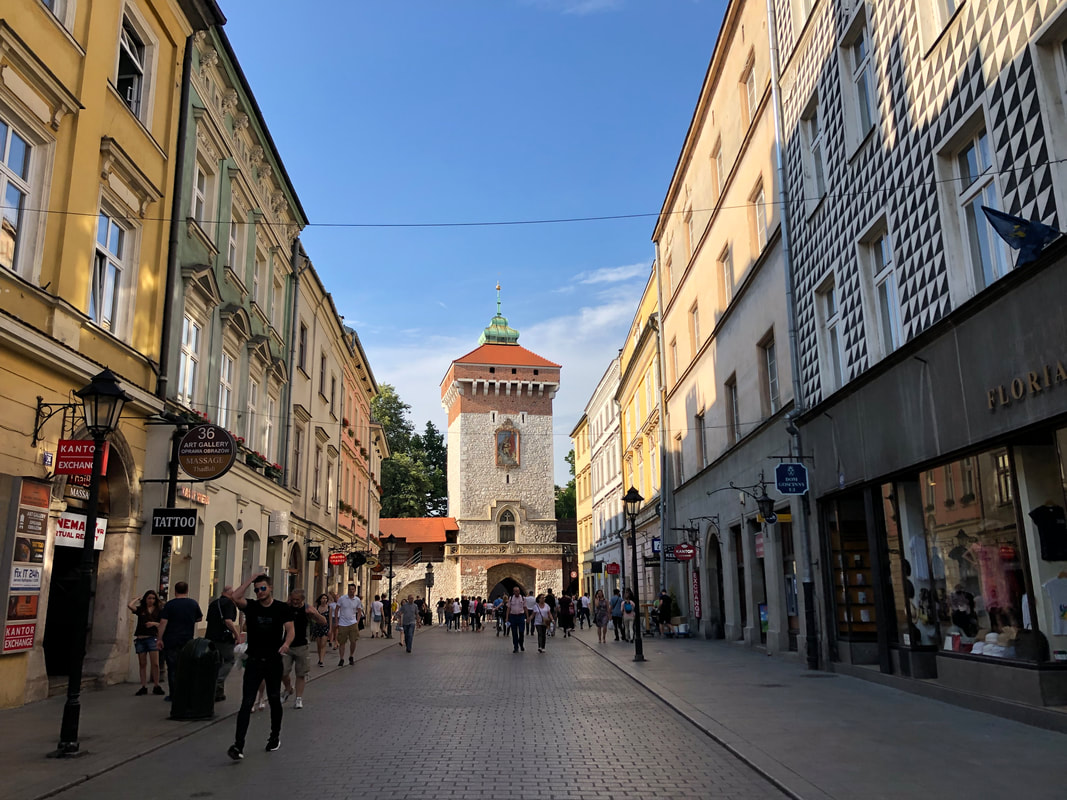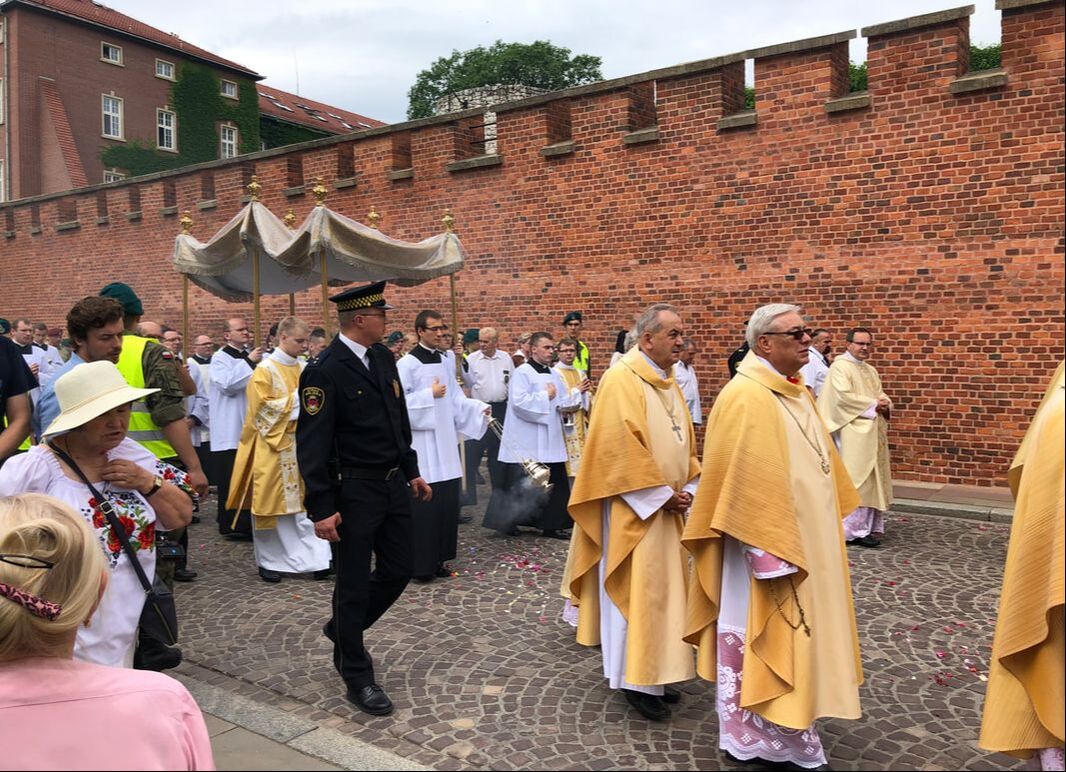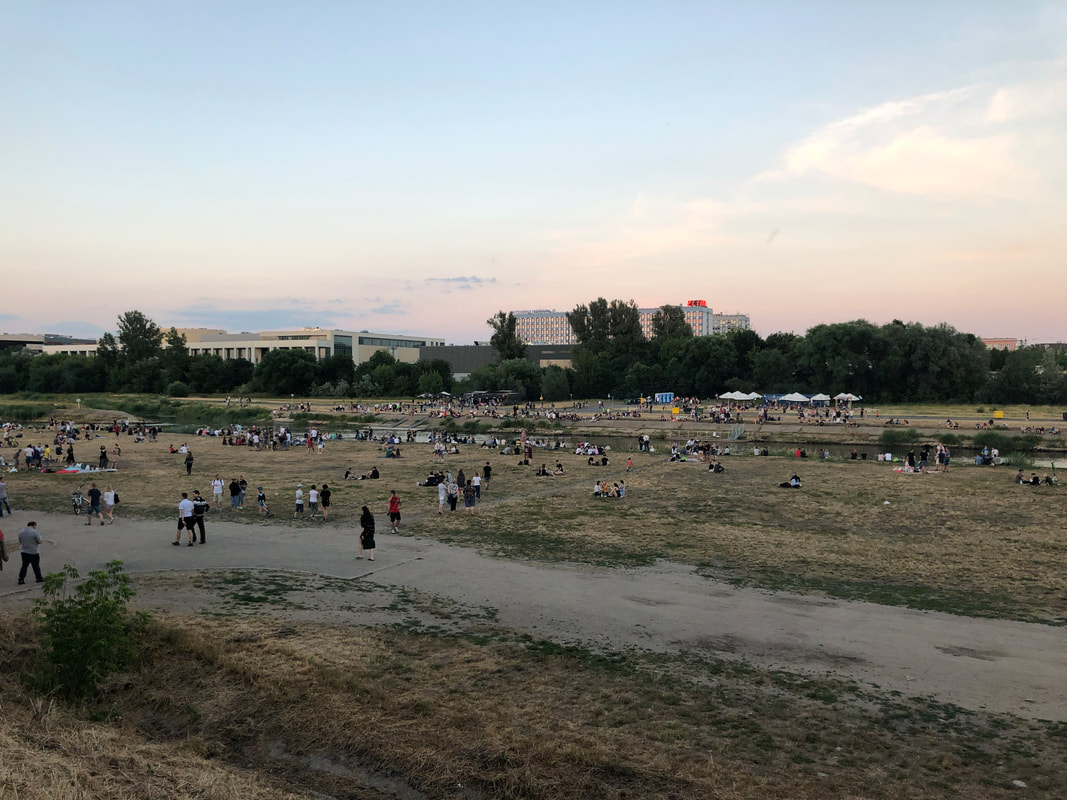Poland
If we did nothing else in Poland but eat plate loads of pierogies, I would have been happy. While we did that in spades, we also discovered one of our favourite countries in Central Europe.
We travelled into Poland by bus, from Poprad in the north of Slovakia. Our first stop was the lovely city of Kraków. We rented an Airbnb near the old town walls, in the north between the main railway station and St Florian's Gate. This Polish Gothic tower was built in the 14th century and served as the main entryway into the Old Town.
The Old Town is built around the Main Square- the largest medieval town square in Europe. In the middle of the square sits the Cloth Hall, once a center of international trade and still one of the most recognizable icons of the city. Behind the hall, the Town Hall Tower rises up 70m tall. The tower is the only remaining part of the old Town Hall, which was demolished in 1820.
The Old Town is built around the Main Square- the largest medieval town square in Europe. In the middle of the square sits the Cloth Hall, once a center of international trade and still one of the most recognizable icons of the city. Behind the hall, the Town Hall Tower rises up 70m tall. The tower is the only remaining part of the old Town Hall, which was demolished in 1820.
At the south of the Old Town, the Wawel Royal Castle sits atop Wawel Hill and overlooks the Vistula River. As we entered the castle gates, we came face to face with a huge crowd of people. We watched from the side as a huge procession emerged from the Cathedral and made its way through the castle grounds. We had no idea what the celebrations were for, but watched on as the crowd headed out of the castle walls, down the hill and through the town.
We later learned that the processions were in celebration of Corpus Christi. It is said that in 1263, in the Polish town of Bolesno, a church wafer, held in the hands of a doubtful priest, started bleeding. Since then, Poland has celebrated Corpus Christi with colourful processions and an array of traditional customs, such as creating flower carpets. The traditional clothing of the different groups in the procession were fascinating to see all in one place.
We later learned that the processions were in celebration of Corpus Christi. It is said that in 1263, in the Polish town of Bolesno, a church wafer, held in the hands of a doubtful priest, started bleeding. Since then, Poland has celebrated Corpus Christi with colourful processions and an array of traditional customs, such as creating flower carpets. The traditional clothing of the different groups in the procession were fascinating to see all in one place.
On the most somber day of our trip, we took a bus to Oświęcim to visit the Auschwitz-Birkenau Memorial and Museum. We took a guided tour that covered both parts of the former concentration camp, Auschwitz and Birkenau, in order to better understand the history and tragedy of this place. Auschwitz was the largest of the German Nazi concentration camps and extermination centers. Over 1.1 million men, women and children lost their lives here.
The visit was confronting and heartbreaking, but stories of survival and resilience also shone through the sorrow. A sign that reads "Arbeit macht frei" meaning "work sets you free" appears on the entrance to the concentration camp. The sign was made by prisoner-labourers and features an upside-down B, which has been interpreted as an act of defiance by the prisoners who made it. Other prisoners who worked in privileged positions (such as in camp kitchens or warehouses sorting prisoners' confiscated possessions) risked extreme punishment to steal extra rations and clothing that helped save lives in the harsh conditions of the camp.
Words really cannot express the experience of visiting the former camp, but the events that took place here cannot be ignored or forgotten. For more information about the history of Aushwitz-Birkenau visit the offical website here.
The visit was confronting and heartbreaking, but stories of survival and resilience also shone through the sorrow. A sign that reads "Arbeit macht frei" meaning "work sets you free" appears on the entrance to the concentration camp. The sign was made by prisoner-labourers and features an upside-down B, which has been interpreted as an act of defiance by the prisoners who made it. Other prisoners who worked in privileged positions (such as in camp kitchens or warehouses sorting prisoners' confiscated possessions) risked extreme punishment to steal extra rations and clothing that helped save lives in the harsh conditions of the camp.
Words really cannot express the experience of visiting the former camp, but the events that took place here cannot be ignored or forgotten. For more information about the history of Aushwitz-Birkenau visit the offical website here.
Our next destination, Wroclaw, was a city we knew nothing about and delivered a sense of fairy tale magic. The colourful buildings, festive squares and beautiful churches make it picture perfect. Then, to top it off, there are over 350 dwarf statues scattered throughout the streets and sights. A top tourist activity is trying to spot these small statues as you explore the city.
For our final two days in Poland, we travelled north to the city of Poznań, on the Warta River. The old town center is incredibly charming and we treated ourselves to one final pierogi lunch and a few craft beers on the outside patio of the Jabeerwocky Craft Beer Pub. Our visit along aligned with the dates of the Malta Festival 2019- a series of theatrical and dance spectacles, outdoor concerts, and exhibitions held at abandoned buildings. As the sun started to set, families and groups of friends gathered down near the riverside. We watched a free fire twirling show, wandered through some installation art, and saw an aerial silks performance that hung from the Bolesław Chrobry Bridge.
The final bus ride of our 2019 Eastern & Central Europe trip took us three hours west to Berlin, where we would catch our flight back to Australia. We had originally anticipated travelling for an additional 6 months, heading further east to Lithuania, Belarus, Ukraine, Moldova and beyond, but my Australian visa was approved and set us a new deadline for getting back into the country. Hopefully, sometime in the future, we will be able to complete unfinished journey, and add a trans-Siberian train adventure on top!
The final bus ride of our 2019 Eastern & Central Europe trip took us three hours west to Berlin, where we would catch our flight back to Australia. We had originally anticipated travelling for an additional 6 months, heading further east to Lithuania, Belarus, Ukraine, Moldova and beyond, but my Australian visa was approved and set us a new deadline for getting back into the country. Hopefully, sometime in the future, we will be able to complete unfinished journey, and add a trans-Siberian train adventure on top!
Questions about travelling in Poland? Email us and we will be happy to help!











